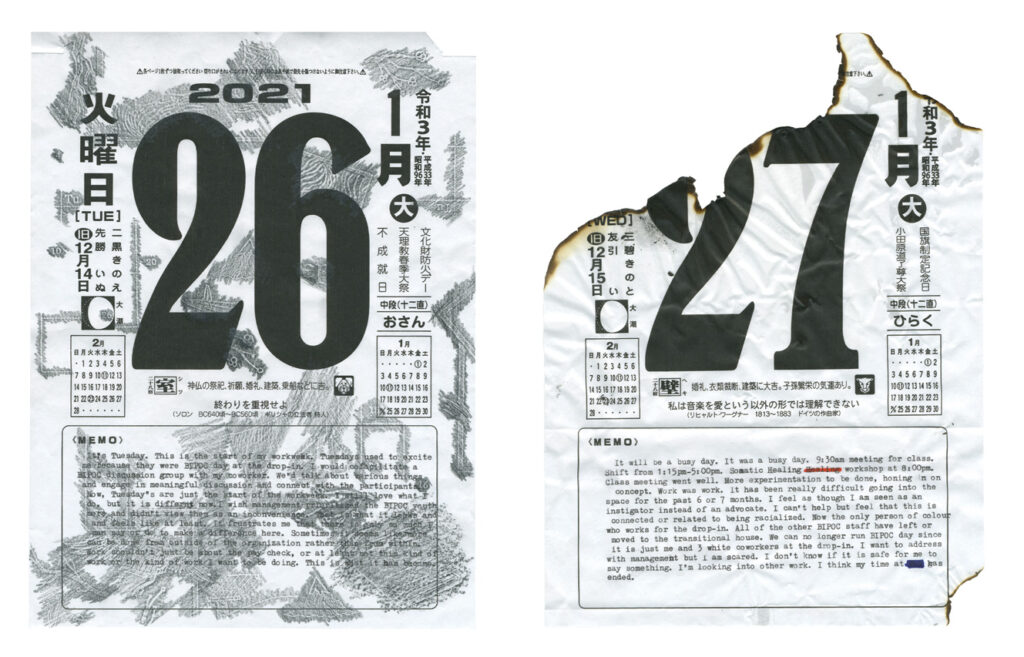The ‘days’ Unit
 Takeaways
Takeaways
- Appreciate the connection between art and healing
- Value of the role of art as an alternative to, or combined with, mental health care
- Understand the importance of creative self-expression for conveying the complexity of lived experience at the intersections of madness, race, gender, and sexuality
- Recognize the importance of creating a more diverse, inclusive, accessible, and equitable mental health system to meet the needs of racialized, gender-diverse folks
 Component
Component
The first component for this unit is an artwork called “days” by River, a multidisciplinary artist and maker, who self-identifies as a mad gender-nonconforming/gender diverse trans mixed person of colour. In this work, River documents their mood, mental health, and life events using their typewriter and writing on a daily calendar. They then manipulate the pages with different mediums, such as fire, ink, water, or crumpling the pages. A second component is a series of interview excerpts in which River explains their process and the meaning of the work to help open a conversation about alternative, intersectionality-attuned accessible mental health supports.
 Learning Lens
Learning Lens
River’s artwork ‘days’ invites the viewer to enter the everyday, lived experience of the artist as they communicate what is going on for them in terms of their mental health. In their interviews, they also express their experiences in a white, cis-hetero-normative mental health system in which practitioners routinely express hegemonic and harmful stereotypes of trans-subjectivity (e.g., not being “trans enough”), as well as racist micro- and macro- aggressions. In the context of the mental health system, racism can take many forms, from putting white people ahead of people of colour on wait lists for treatment, to expressing overt racist slurs.
River expresses their desire for alternatives, including different therapeutic modalities such as writing and art, and approaches derived from Eastern medicine. Indeed, individual “talk therapy” with a mental health professional is a fairly recent invention, and is still not the norm in many parts of the world. Religious, spiritual, and community leaders and families can play a much more central role, and collective practices involving rituals, song, dance, and other forms of expression may also be central to acknowledging and coping with mental health difficulties.
River also identifies the need for more 2SQTBIPOC mental health professionals. In Canada, to date, BIPOC psychologists, let alone 2SQTBIPOC psychologists, are extremely few in number. River’s artwork and narrative expose the multiple ways the dominant mental health system is inadequate to meet their own needs, and their creative responses to this inadequacy.
To support safe and effective learning, educators new to this material need to study and implement Mad School’s Anti-Oppression Statement.



 Français
Français